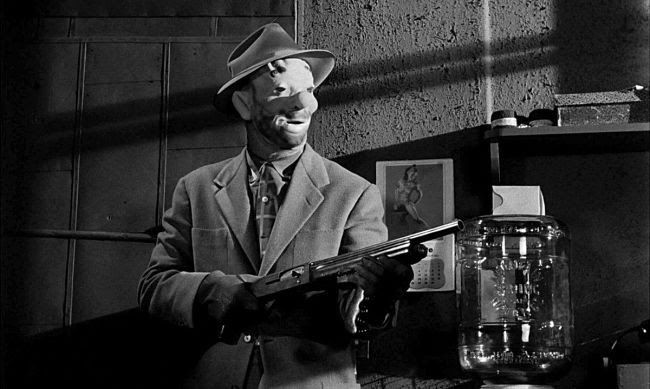
Stanley Kubrick’s Cinematography Marvel “ The Killing”
- driveinfilmreviews
- May 28, 2024
- 3 min read
Stanley Kubrick’s 1956 film “The Killing” stands as a cornerstone of cinematic history, particularly within the film noir genre. This seminal work, though not Kubrick’s first film, marked his emergence as a filmmaker of extraordinary talent and vision. The movie intricately weaves together the planning and execution of a racetrack heist, unraveling through a non-linear narrative that was innovative for its time. Through this in-depth review, we will explore the main characters and their portrayal, the distinctive cinematography style, the attributes that anchor the film firmly within the noir genre, Kubrick’s pivotal influences in crafting this masterpiece, and its enduring legacy in cinema.

Sterling Hayden as Johnny Clay – Hayden’s portrayal of the mastermind behind the heist is both stoic and compelling, embodying the archetypal noir protagonist with a flawed but determined vision.
Colleen Gray as Fay – As Johnny Clay’s girlfriend, Gray delivers a performance that is both nuanced and emotionally resonant, providing a soft contrast to the otherwise grim and masculine world.
Elisha Cook Jr. as George Peatty – Cook’s character, a cashier at the racetrack with a disloyal wife, is portrayed with a palpable sense of vulnerability and desperation.
Marie Windsor as Sherry Peatty – Windsor’s role as the unfaithful wife to Elisha Cook Jr.’s character is executed with an air of manipulation and cunning, adding a critical tension to the narrative.

The cinematography of “The Killing”, led by director of photography Lucien Ballard, is a masterpiece of visual storytelling that greatly contributes to the film’s mood and suspense. The use of high-contrast lighting, meticulously framed shots, and deep focus lends a sense of impending doom and inevitable tragedy that is quintessential to the noir aesthetic. Kubrick’s decision to shoot scenes from unconventional angles and his innovative use of tracking shots not only advance the narrative but also serve to immerse the viewer in the heist’s tension and uncertainty.
“The Killing” epitomizes the film noir genre through its exploration of themes such as fatalism, betrayal, and moral ambiguity. Characterized by its cynical attitude and sexual motivations, the film employs noir staples like the femme fatale and the hard-boiled detective archetype, albeit in a more subdued manner. The visual style, marked by shadowy, high-contrast scenes, complements the narrative’s tense atmosphere and the characters’ complex moral landscapes. This adherence to and innovation upon noir traditions have cemented “The Killing” as a pivotal film within the genre.

Stanley Kubrick’s approach to “The Killing” was heavily influenced by his background in photography and a keen interest in chess. His photographic eye is evident in the film’s composition and meticulous attention to detail, while his strategic thinking, much like a chess game, plays out in the film’s complex narrative structure and character movements. Kubrick also drew inspiration from earlier noir films and literature, incorporating and expanding upon genre conventions to create something uniquely his own. These influences culminated in Kubrick’s distinctive storytelling method, characterized by a detached, observational camera work that invites the audience to piece together the story’s puzzle.

Despite initial mixed reviews and modest box office success, “The Killing” has gone on to achieve a cult status and is heralded for its groundbreaking narrative structure and stylistic innovations. The film’s influence can be seen in subsequent heist movies and narrative-nonlinear films, with filmmakers citing it as a significant inspiration. Its restoration and re-release to modern audiences have further solidified its position as a classic, showcasing Kubrick’s genius in his formative years. The film not only contributed to defining the noir genre but also marked the beginning of Kubrick’s illustrious career, offering a glimpse into the thematic and stylistic preoccupations that would dominate his later works.

Comments